There's no such thing as bad weather ...
Nature is a critical part of school and growing up for Scandinavians. Education occurs inside and out at the Scandinavian School.
-
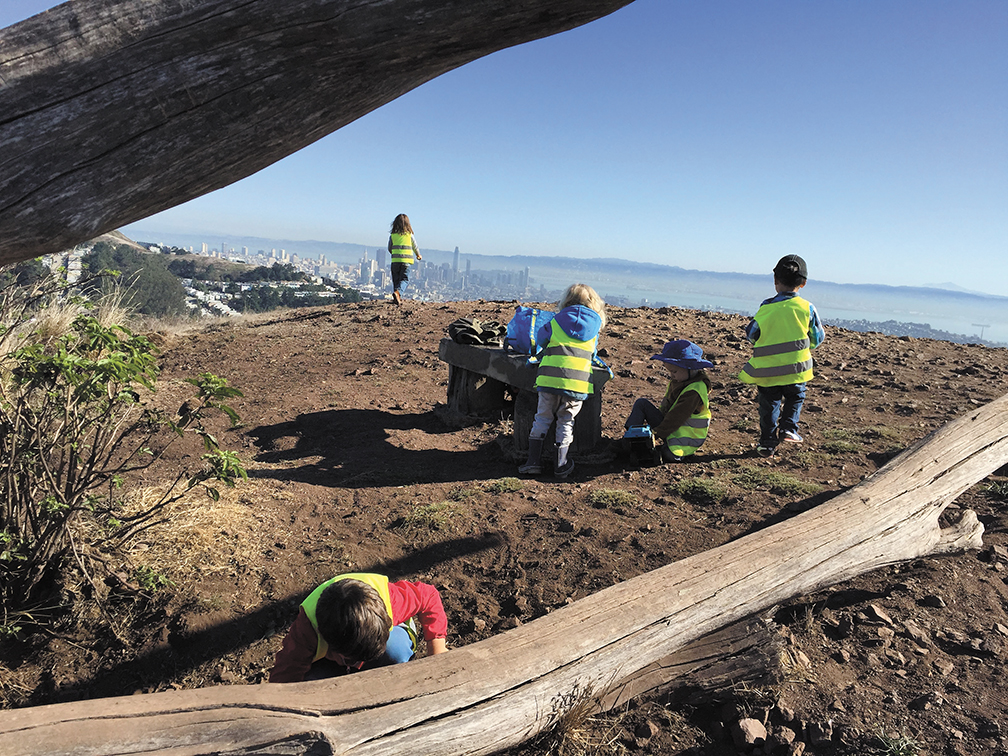 One last opportunity for outdoor fun before returning to school. Photo: Jesper Klinghed
One last opportunity for outdoor fun before returning to school. Photo: Jesper Klinghed -
-
I learned so much at school today! I visited the Scandinavian School of San Francisco, where being outdoors and in nature is essential - rain or shine - for the education of children. (A recently released book by Linda Åkesson McGurk offers more on the perspective of kids in the outdoors: http://www.nordstjernan.com/news/education|research/8413/|[There's no such thing as bad weather]
-
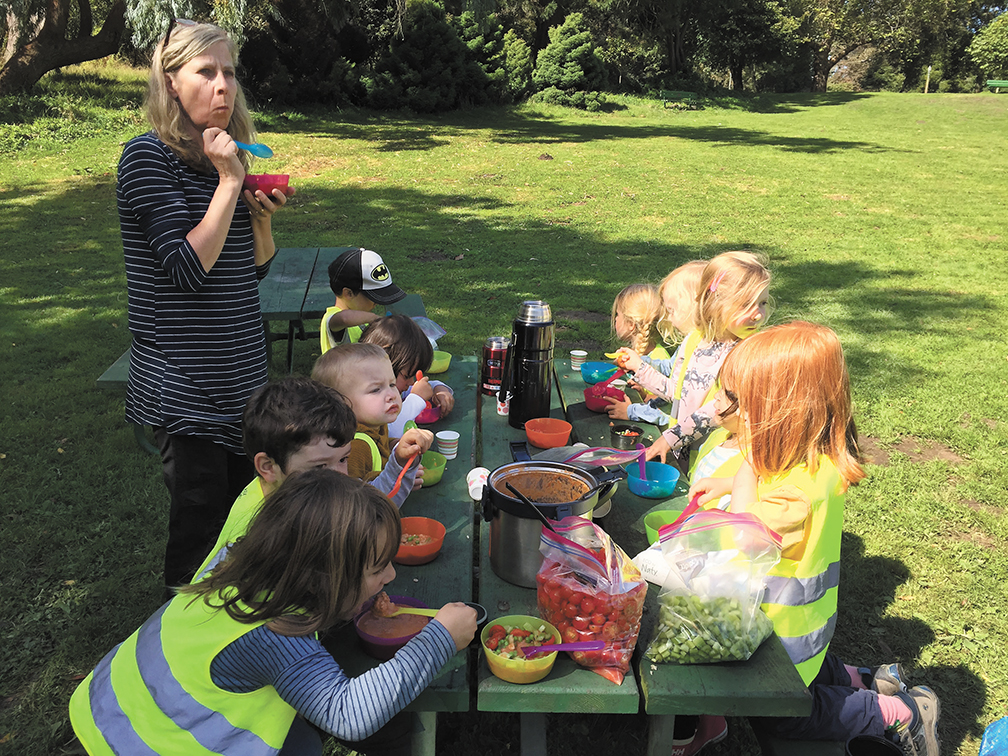 Mealtime with friends, then a bit of a nap. Photo: Jesper Klinghed
Mealtime with friends, then a bit of a nap. Photo: Jesper Klinghed -
-
I accompanied 10 preschoolers (3- to 5-year-olds) as we took the school bus to woodland parks within the city of San Francisco for the school’s Outdoor Program, developed and led by co-head teachers Åsa West and Jesper Klinghed.
I arrived at school early this morning when Jesper was already cooking up lunch for the kids. We chatted and he finished cooking and put the food in thermoses and to-go containers. He told me about growing up in Sweden, and while vacationing in Barcelona he met a lot of Americans and decided to come here. Here he earned a degree at San Francisco State University in kinesiology, which seemed the perfect expertise for today’s trip.
By 9 a.m. the kids began arriving. Jesper and I had already begun to pack the bus for the day’s outing. There were cartons of toys and games as well as a library of appropriate picture books the kids could request. I was taught all the emergency equipment on the bus, and I noted how ingenious the seats were: The center of the seat back folded down raising the seat height for the kids and behind this were the kids’ safety harnesses, securing them while traveling. The rule was that a teacher had to secure and release each harness; the kids were not allowed to do this themselves.
This was a modern bus, similar to a small touring or para-transit bus, but the front two rows had two seats on either side of the center aisle followed by a space about two rows long without any seats. The last two rows of seats faced each other and had a table between them. There was even a small bathroom. The luggage racks above the seats held all the food, books, toys, extra clothes, blankets and nap pads. And these racks on each side also contained speakers so the kids could hear familiar Scandinavian songs during the ride.
Åsa and I sat facing each other at a back table for the ride to the Presidio outlands. She was one of the original parents at the school, then was invited to join the school board, later to become a teacher, and now both she and Jesper run the Outdoor Program. Jesper had mentioned that he and Åsa handle these outings like packing for a family picnic - everyone knows the routine and is familiar with their roles, attire and responsibilities. Normal routine is very reassuring to the children, and they look out for each other and remain within eyesight of the teachers. -
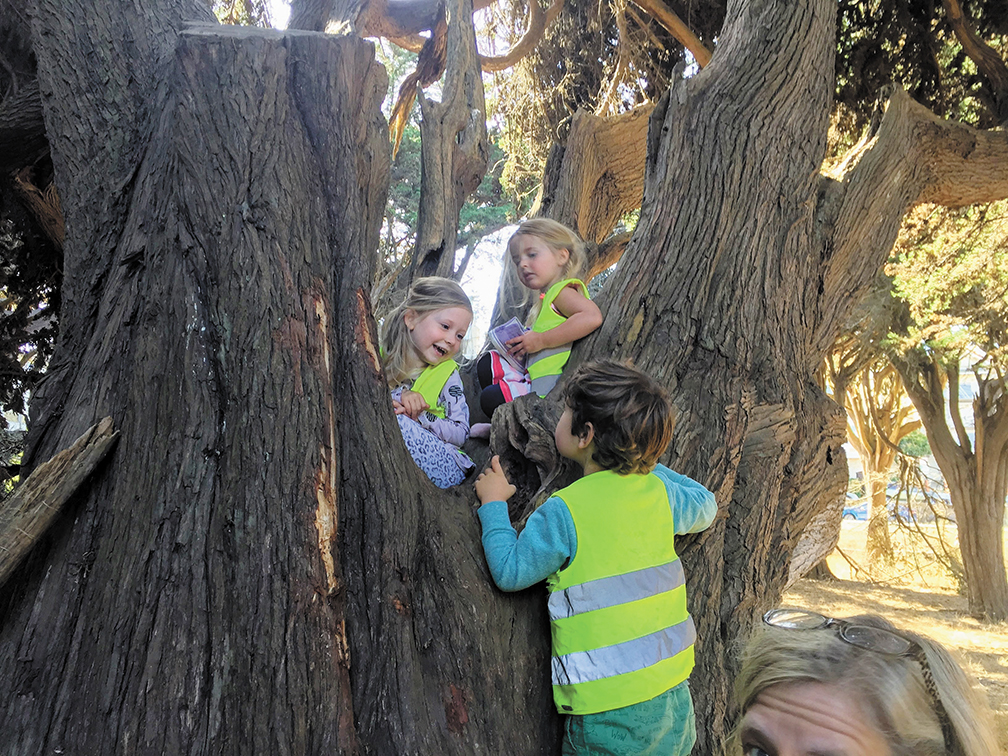 Kids love to climb trees, and here there are enough for each and many for all. Photo: Jesper Klinghed
Kids love to climb trees, and here there are enough for each and many for all. Photo: Jesper Klinghed -
Oldest Scandinavian school in the U.S.
Since its beginning in 2002 (which makes it the oldest Scandinavian school currently in the U.S.), it has been important for daily playtime outside, to have time with their pals in school as well as free time to scramble among the trees in the wilderness. No safety-manufactured jungle gyms for them; they wanted to meet trees that would challenge them. Knowing each of their charge’s skills and abilities, the teachers do not hover over them — though they are vigilant.
By 10 a.m. we arrived at their favorite Presidio site bordered by a road and a long row of houses facing this wilderness in the city’s original Spanish fort lands. When the kids disembarked they were ready for climbing with their rubber boots and distinctive yellow Ikea safety vests.
The kids had fresh fruit and vegetable snacks out on a log, and played in groups of friends, always within eye and earshot of the teachers. This was not a nature lecture; this was letting kids exercise, socialize and explore their surroundings and their own talents and fitness.
I watched a boy named Shiloh shimmy up a huge branch that had toppled from a tall cypress but still leaned against its trunk. He was rightfully proud of himself, talking and gazing down on other guys in his group. He reminded me of my kids, for whom limits were merely challenging opportunities. Jesper and I watched nearby but were not needed, though Jesper gave him some advice, which he heeded because of the rational explanation that accompanied it, not because of any order.
While I was watching the Scandinavian kids, another group of a dozen or so kids arrived nearby. Each group was interested in their own tangle of woods. They chose a site where the cypress trees had bent over, providing lots of horizontal climbing over the ground below. -
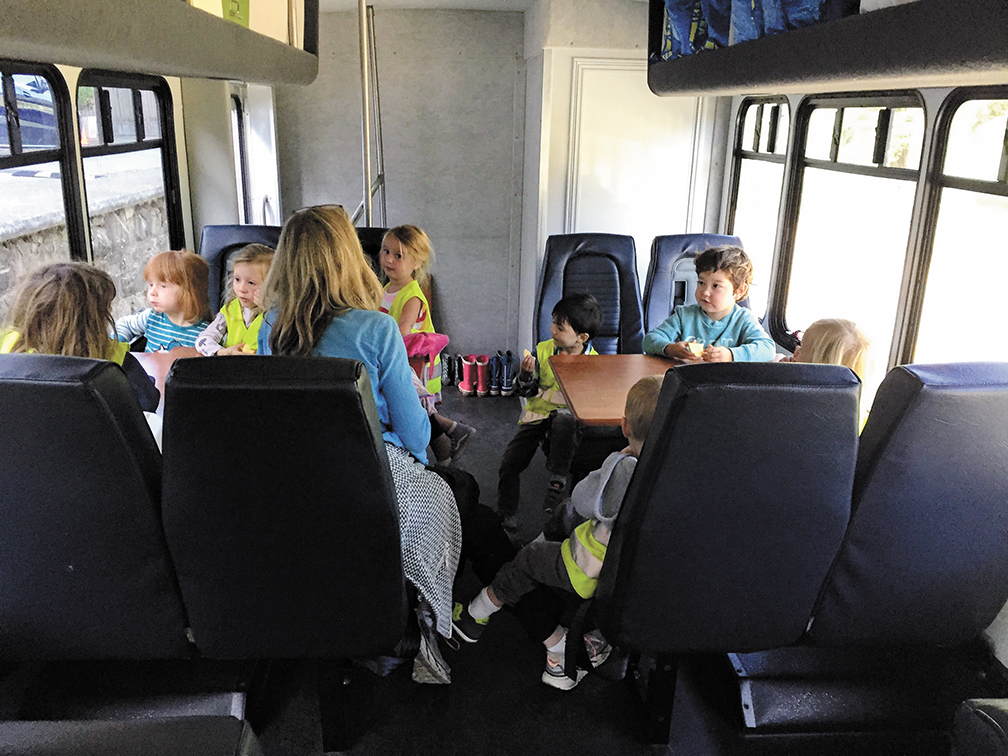 The kids are happy in transit - some at tables, others in chairs, all belted in for safety. Photo:Jesper Klinghed
The kids are happy in transit - some at tables, others in chairs, all belted in for safety. Photo:Jesper Klinghed -
Golden Gate Park, another familiar spot
Just before noon we all piled back onto the bus. The boots were removed, the kids were secured, each with a preferred book and Jesper drove us halfway across the city to Golden Gate Park. Here too was another familiar spot for the kids, which they enjoyed and felt comfortable in. The familiarity was easy to spot, dangling from a couple trees were little white-bearded tomte Christmas ornaments, which had inconspicuously adorned this favorite site earlier by the school.
The kids played for a while, and Åsa spread a blanket near a picnic area with a pair of tables where Jesper was setting out the lunch. Everyone was called down to lunch and they quickly assembled around the table, wiped their hands with moist wipes, drank water and received a nutritious lunch according to their wishes: a vegetable chili stew, brown rice, corn and buttered knackebrod. And there still was plenty for seconds.
Their tummies full, the children climbed up the hill to the bus for a nap. The teachers made each child comfortable in a seat with a book or resting on a floor pad in the aisles or between the rows covered with light blankets. I joined them at the table admiring the organization of it all. I guess they weren’t the only ones who needed I nap: I woke up after all the kids were back outside calmly playing with Lego or throwing a Frisbee.
By 3 p.m. everyone was back on board the bus headed back to school. Classes had already ended for the core program students and they were in the yard playing. Parents began to arrive to pick up their kids, and after all were gone, the bus was unpacked, everything was returned in order, and Jesper could park the bus.
The Outdoor Program is a special program beyond the Core Program, which parents pick and pay for their students, to provide them this quite typical component of Scandinavian schools’ education. Serving Scandinavian parents or those valuing this modern pedagogy and values of their own ancestors, the kids are well prepared for entering kindergarten after this school. -
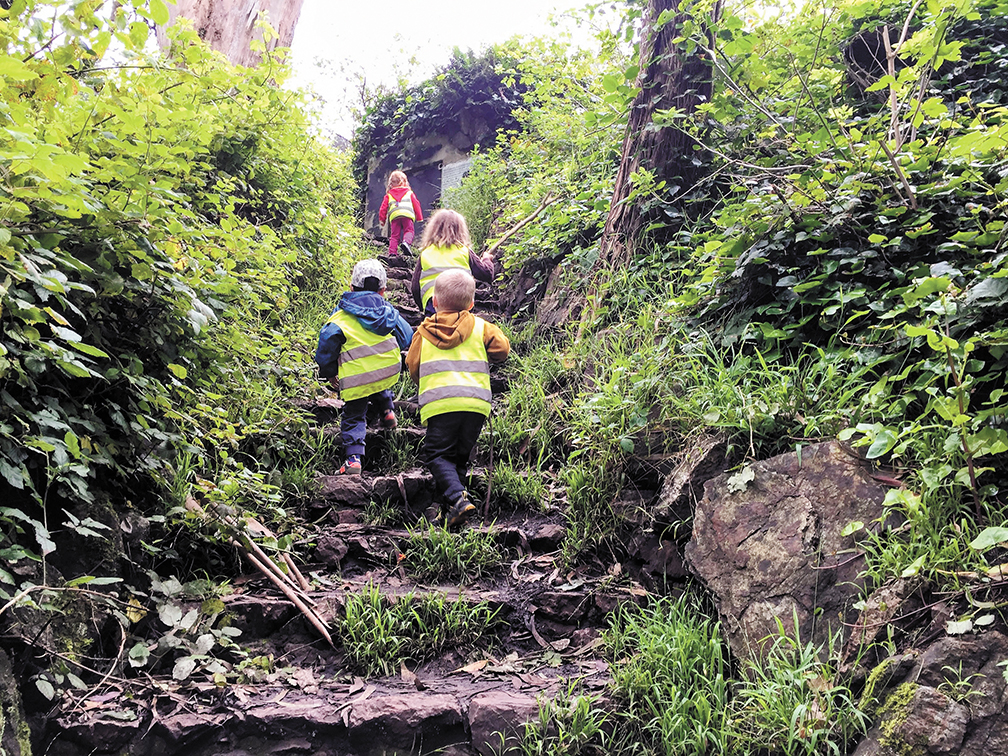 Under vigilant care, kids are free to climb up a trail. Photo: Jesper Klinghed
Under vigilant care, kids are free to climb up a trail. Photo: Jesper Klinghed -
Ted Olsson
-
-
